
To Jeremy and Claire Lines
Ian Nicolson has written over 20 books, among them:
Build Your Own Boat
Improve Your Own Boat
Nicolson on Sails
Published by Adlard Coles Nautical an imprint of Bloomsbury Publishing Plc 50 Bedford Square, London WC1B 3DP www.adlardcoles.com
Bloomsbury is a trademark of Bloomsbury Publishing Plc
This electronic edition published in 2014 by Bloomsbury Publishing Plc
Illustrations and text copyright Ian Nicolson 1978, 1985, 1994, 1999, 2003, 2009, 2014 Text copyright Richard Nicolson 2014
First edition Nautical Books 1978
Second edition 1985
Third edition Adlard Coles Nautical 1994
Fourth edition 1999
Fifth edition 2003
Sixth edition 2009
Seventh edition 2014
ISBN 978-1-4729-07974
ePDF 978-1-4729-08964
ePub 978-1-4729-08957
All rights reserved. You may not copy, distribute, transmit, reproduce or otherwise make available this publication (or any part of it) in any form, or by any means (including without limitation electronic, digital, optical, mechanical, photocopying, printing, recording or otherwise), without the prior written permission of the publisher. Any person who does any unauthorised act in relation to this publication may be liable to criminal prosecution and civicl claims for damages.
The right of the author to be identified as the author of this work has been asserted by him in accordance with the Copyright, Designs and Patents Act, 1988.
Errors and omissions
Great care has been taken to ensure that the data in this book is accurate. However, the information has to pass through many processes: typesetting, printing, correcting, and so on, resulting in alterations which may inadvertently introduce errors. As a result no guarantee is given or implied that the information in this book is accurate; no responsibility can be accepted for the use, or consequence of the use, of this data. In some instances deliberate approximations have been used.
Readers are invited to contribute suggestions for future editions of this book. New data is welcomed, also any corrections and updates for existing information. Ideas should be sent to: Adlard Coles Nautical, 50 Bedford Square, London WC1B 3DP.
The author and publishers are grateful for past contributions by readers.
To find out more about our authors and their books please visit www.bloomsbury.com where you will find extracts, author interviews and details of forthcoming events, and to be the first to hear about latest releases and special offers, sign up for our newsletters here.
Contents
Introduction
Now in its seventh edition, this book is for owners, crew, boat buyers, charterers, chandlers, builders, repairers, designers, draughtsmen and students. In fact, for anyone concerned with boats and ships.
One of its most valuable uses is saving time and trouble when specifying anything. By simply quoting a page anyone can order equipment without having to look up the correct size and write out lengthy details. An owner can phone a marina or chandler and simply say: Put a new anchor on my boat. Size as specified in The Boat Data Book. Designers can reduce long lists of rigging to: As detailed in The Boat Data Book, , column for yachts between 9 m and 11 m.
Anyone buying a boat can check the standard of its equipment by referring to the lists in this book. There is a widespread practice of fitting boats with totally inadequate anchors, chains, winches and so on. Many second-hand boats offered for sale are found to have inadequate safety gear, and much of what is on board is often out of date. Reference from will show what is needed.
When designing or acquiring a boat it is important to check dimensions of berths, galley top heights and so on. There is a tendency also to save on building costs by fitting furniture which is under-size and as a result inconvenient, besides being uncomfortable to use. on Design gives many basic dimensions, standards, recommended minimum sizes and so on.
Dimensions are given in m (or mm) as well as ft and in. Speed is in knots because this is still the universal unit at sea, but there are conversion tables from knots to km per hour and miles per hour .
 ACKNOWLEDGEMENTS
ACKNOWLEDGEMENTS
My thanks are due to the people, often unknown, who devised many of the formulae in this book, and to McKechnie Metals of Walsall for permitting me to use many of their tables. Thanks are also due to those who have kindly given permission to use data, graphs and lists including the British Standards Institute, Calor Gas, Camping Gaz, Caterpillar, Copper Development Association, Harken, Seldon Masts, International Paints Ltd, Lee Sanitation Ltd, Lewmar, Marlow Ropes, Norseman Ropes, Ormiston, RNU, J Thompson Timber, Yachting World, Yachts and Yachting, and Bernard Haymans executors. Apologies are offered for inadvertently omitting any company or person whose data has been used.
Boat Equipment
 DELTA ANCHORS SIZES AND SHAPES
DELTA ANCHORS SIZES AND SHAPES
The advantages of the Delta anchor include excellent holding power, no moving parts, and the ability to self-stow and self-launch on and off a steamhead roller. The two bends in the shank are the secret of its self-stowing ability. Dimensions are shown below for metric units and overleaf for imperial units.
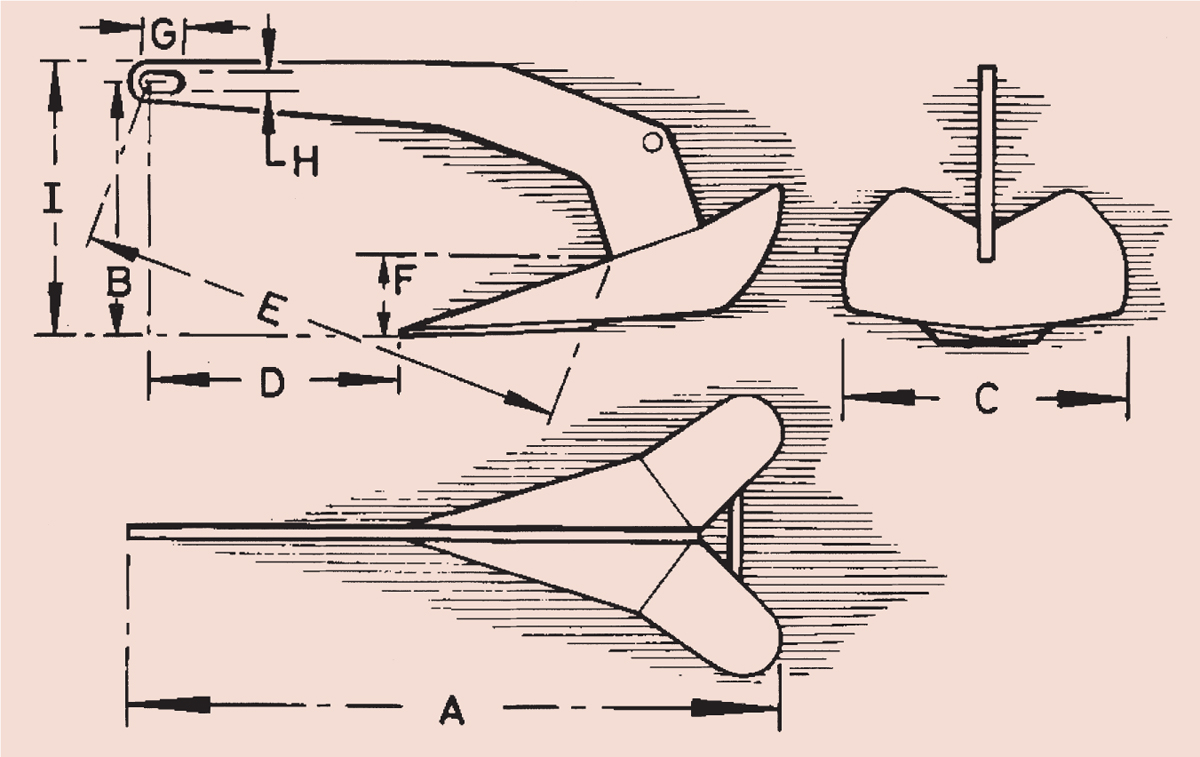
Delta anchors: dimensions and weights (metric units)
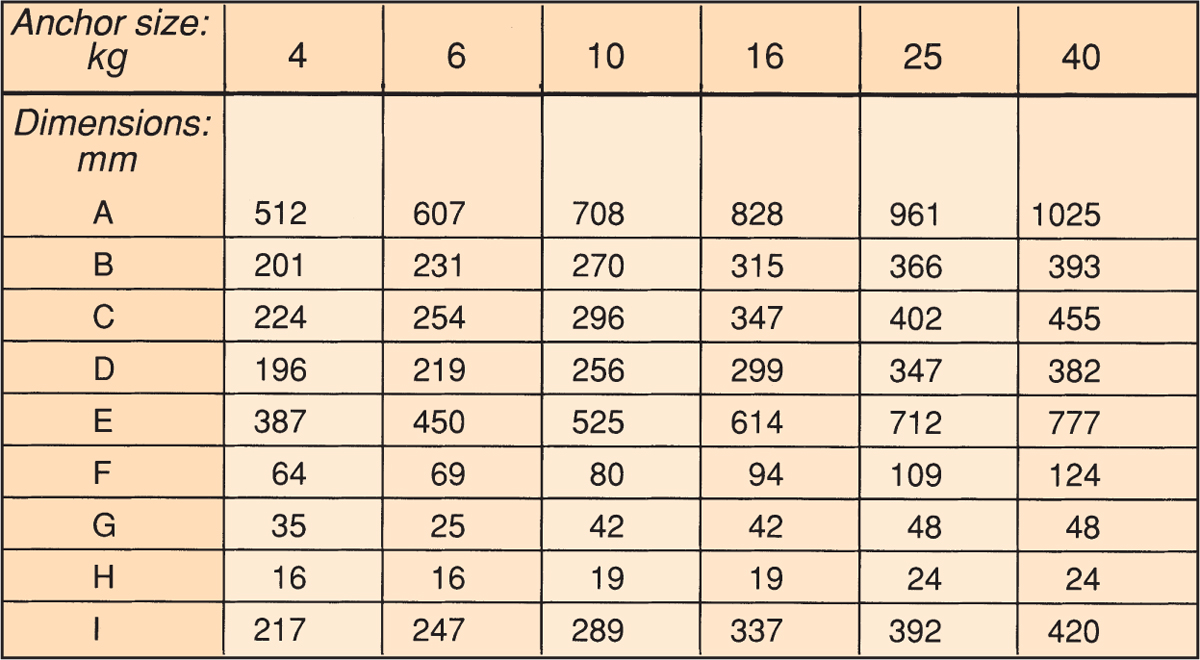
Delta anchors: dimensions and weights (Imperial units)
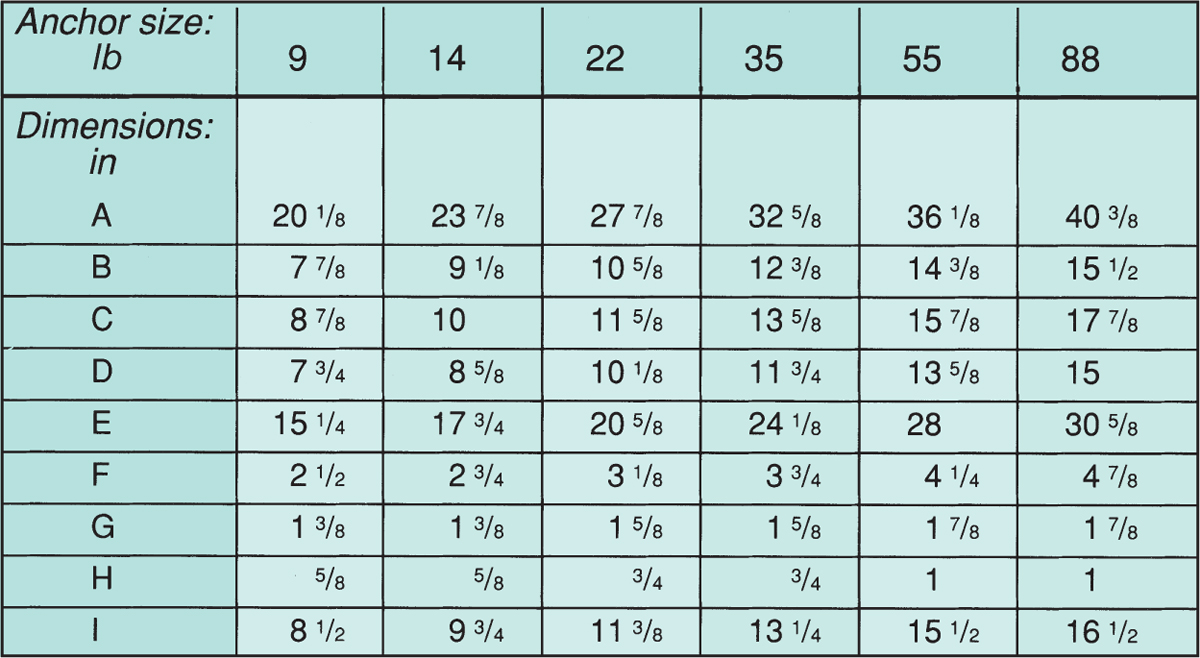
 DANFORTH ANCHORS PROPORTIONS AND SIZES
DANFORTH ANCHORS PROPORTIONS AND SIZES
These figures are based on the standard Danforth anchor which has been developed and tested extensively. Wide variations from these proportions should be treated with caution.
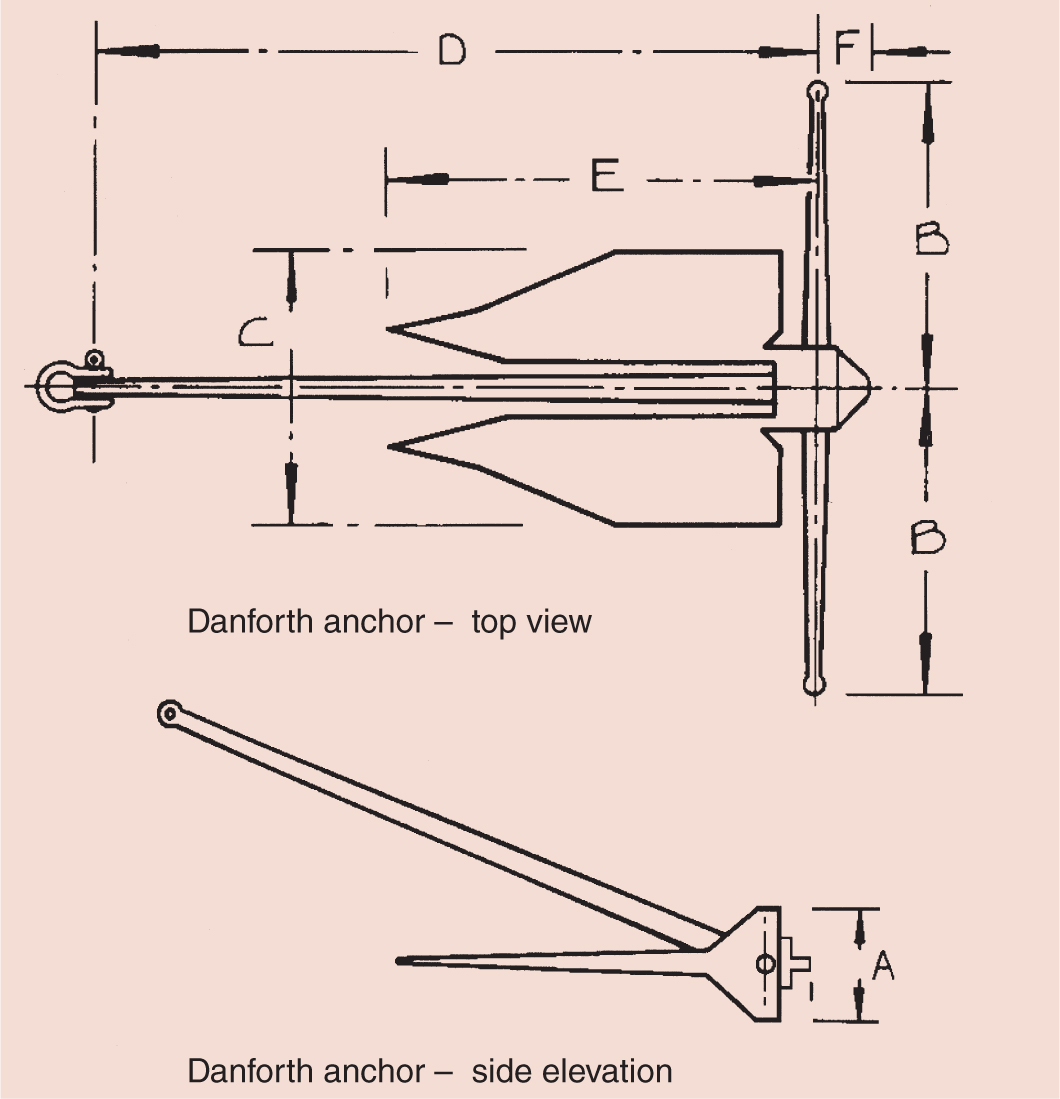
Danforth anchors: dimensions and weights (metric units)
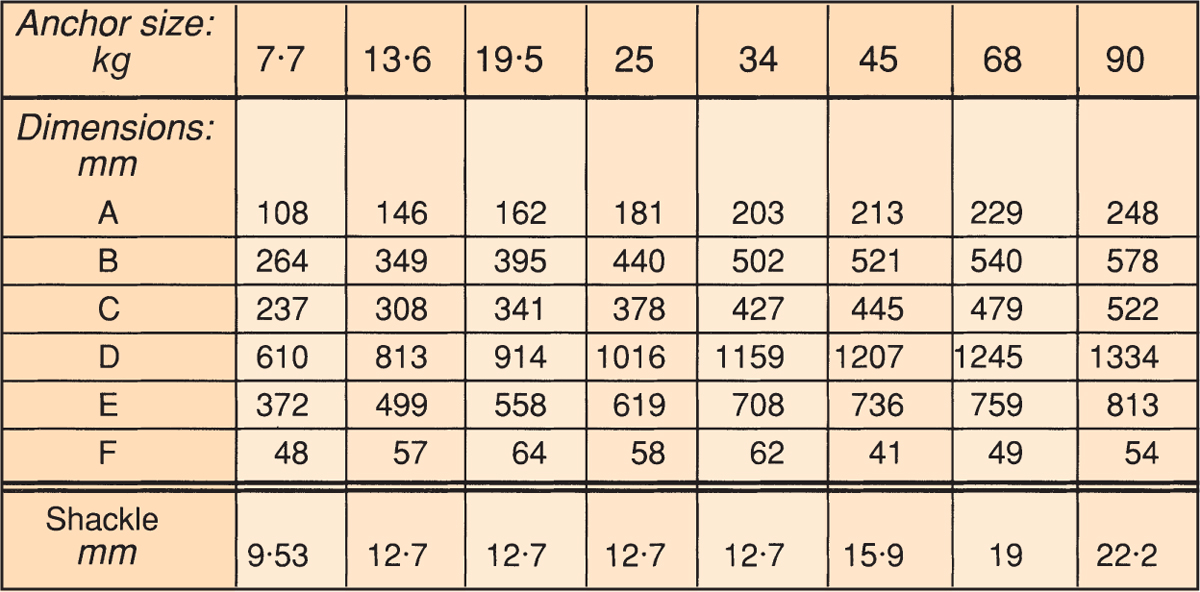
Danforth anchors: dimensions and weights (Imperial units)
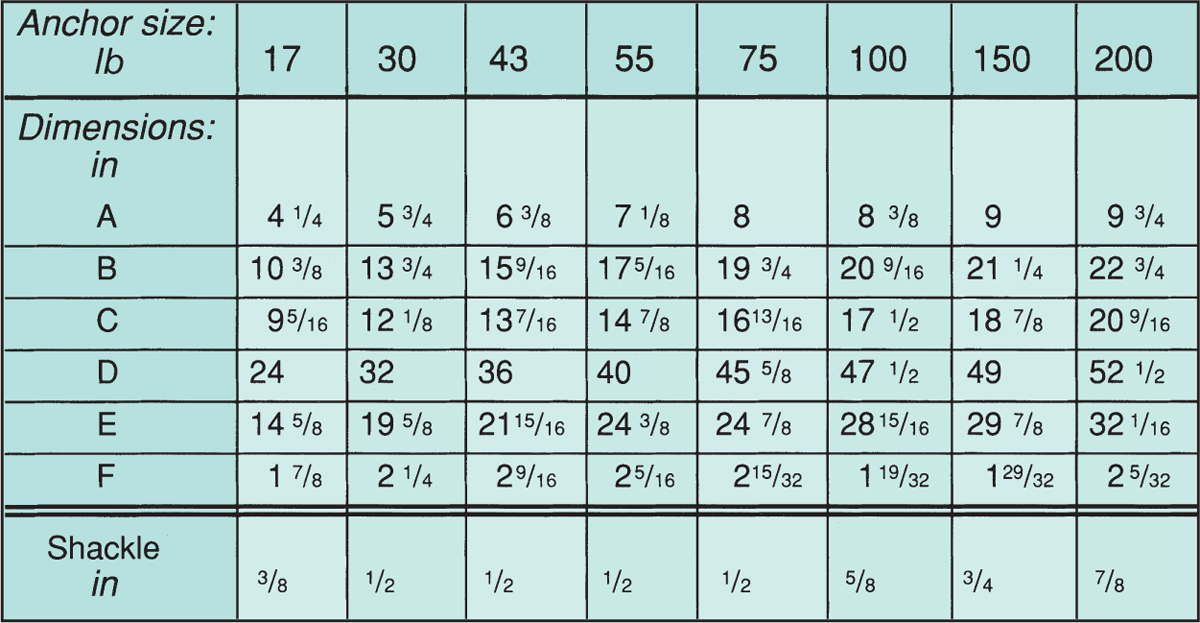
 CQR ANCHORS SIZES AND SHAPES
CQR ANCHORS SIZES AND SHAPES
A CQR anchor is sometimes left hanging over a bow roller when a vessel goes to sea. It is important that there are at least three strong lashings on it: two on the shank and one to prevent the plough end from moving in severe conditions. These lashings are usually needed even if the anchor chain has been hauled in very tight by the anchor windlass. It may be necessary to fit a pad between the sharp point of the plough and the hull, or have stainless steel plates on the stemhead to deal with wear caused by the anchor when stowed on the stemhead roller.

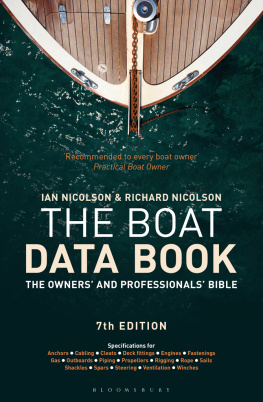
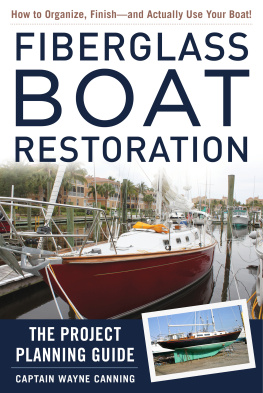

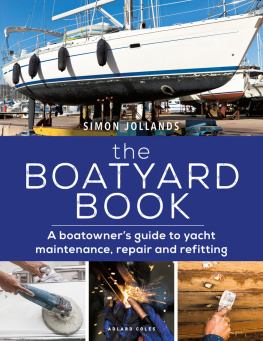
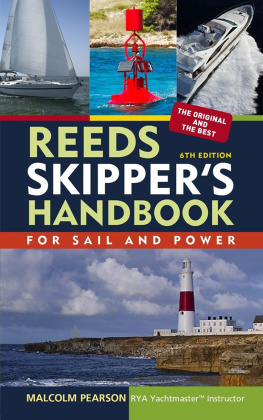
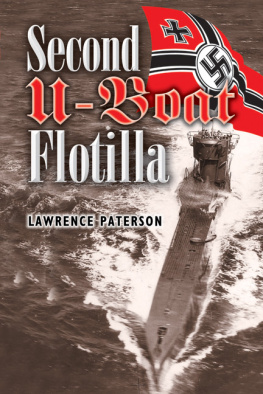
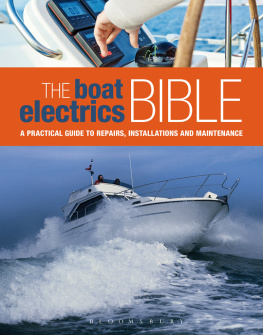
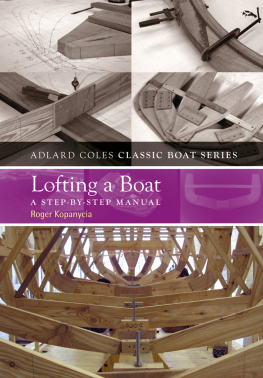
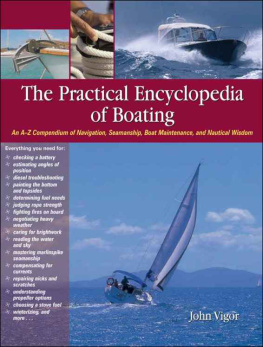


 ACKNOWLEDGEMENTS
ACKNOWLEDGEMENTS DELTA ANCHORS SIZES AND SHAPES
DELTA ANCHORS SIZES AND SHAPES




